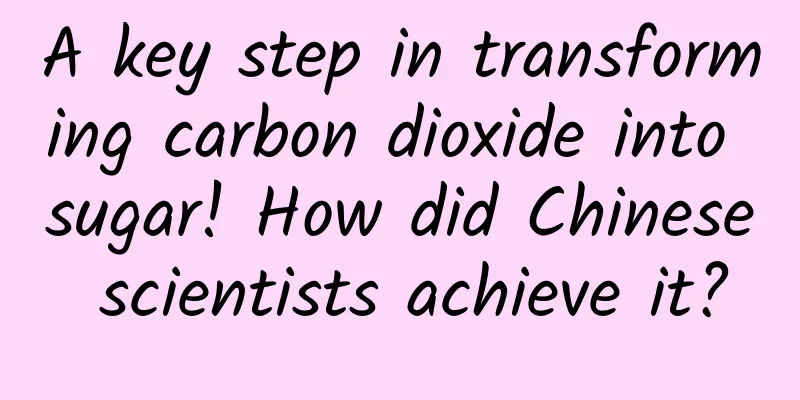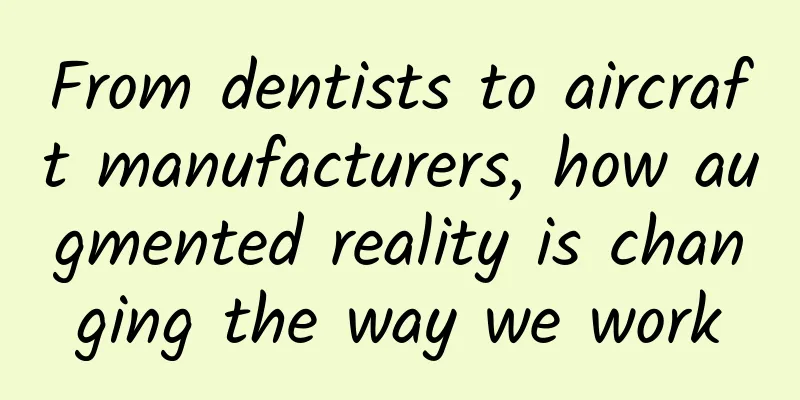A key step in transforming carbon dioxide into sugar! How did Chinese scientists achieve it?

|
In September 2021, the Tianjin Institute of Industrial Biotechnology of the Chinese Academy of Sciences achieved the first artificial total synthesis of starch from carbon dioxide in the laboratory. In less than two years, on August 16, 2023, the laboratory of the Tianjin Institute of Industrial Biotechnology achieved the precise total synthesis of sugar from carbon dioxide, taking a key step in the artificial synthesis of sugar . The famous academic journal Science Bulletin published this latest research result. It only takes 17 hours to synthesize sugar from carbon dioxide Sugar is an important substance in human life and daily life, and is also a key raw material for today's industrial biomanufacturing. So far, humans have mainly relied on plant biomass resources to obtain sugar, but it is not easy to achieve efficient and accurate artificial sugar production. It is understood that in this research on "artificial sugar production", the Tianjin Institute of Industrial Biotechnology, Chinese Academy of Sciences and the Dalian Institute of Chemical Physics, Chinese Academy of Sciences, jointly designed and constructed a non-natural transformation pathway based on enzymatic reactions such as carbon condensation, isomerization, and dephosphorylation - an artificial biosynthesis system of " chemical-enzyme coupling ", and engineered the catalytic properties of enzyme protein molecules to achieve precise control of the synthesis of hexoses with different structures and functions. ▲Design of artificial hexose synthesis route (Source: Functional Sugar and Natural Active Substance Research Group, Tianjin Institute of Industrial Biotechnology, Chinese Academy of Sciences) Specifically, the researchers mixed high-concentration CO₂ and other raw materials in a certain proportion in the reaction solution, and under the action of chemical and enzyme catalysts, they finally obtained four hexoses: glucose, allulose, tagatose, and mannose. The reaction time of the whole experiment was about 17 hours . Compared with the traditional method of obtaining sugar by planting crops such as sugarcane, it has achieved a leap from "years" to "hours" in terms of time scale; in addition, the efficiency of sugar synthesis has increased by more than 10 times compared with known results, reaching 0.67 grams per liter per hour , and the carbon fixation synthesis efficiency of glucose has reached 59.8 nanomoles of carbon per milligram of catalyst per minute . Compared with natural photosynthesis, the sugar synthesis of this "chemical-enzyme coupling" artificial biosynthesis system is more efficient and precise , and the synthesis steps are simpler. It can precisely control the synthesis of hexoses with different structures and functions. More importantly, the carbon conversion rate of this "chemical-enzyme coupling" artificial biosynthesis system is higher than that of natural plant photosynthesis, and is also higher than traditional chemical sugar production and electrochemical-biological coupling artificial sugar production methods. It is the highest level of carbon conversion efficiency in the current artificial sugar production route . ▲A sample of artificial hexose solution photographed in the laboratory of Tianjin Institute of Industrial Biotechnology, Chinese Academy of Sciences. (Source: Xinhua News Agency) Artificial sugar opens a door to green chemistry "This scientific research result is equivalent to constructing a synthesis route that does not exist in nature . It does not rely on land or planting. Its synthesis route is shorter, the synthesis efficiency is higher, and the energy required is less. It can also accurately control the configuration of the product, improve the selectivity of the product and reduce the subsequent separation cost." Yang Jiangang, an associate researcher at the Tianjin Institute of Industrial Biotechnology, Chinese Academy of Sciences, said. ▲In the laboratory of Tianjin Institute of Industrial Biotechnology, Chinese Academy of Sciences, Associate Researcher Yang Jiangang is conducting an experiment on artificial synthesis of hexose. (Source: Xinhua News Agency) In general, this study established a method for synthesizing hexoses from carbon-one compounds such as CO₂, methanol, and formaldehyde, achieving artificial synthesis of hexoses with high conversion efficiency and precisely controllable configuration, which will provide a possibility for the conversion of non-biomass raw materials into diverse artificial sugar products. In the future, the researchers plan to further expand this "chemical-enzyme coupling" synthesis system to produce sugar molecules that are rare or even non-existent in nature, such as oligosaccharides, glycosides or sugar alcohols, and use them as raw materials in food, medicine, biomanufacturing and other fields. Manfred Reitz, a member of the German Academy of Sciences, commented on the paper and believed that converting carbon dioxide into sugar is a particularly challenging task. This achievement provides a flexible, versatile and efficient sugar synthesis route, opening a door to green chemistry . Compiled by reporter Duan Dawei Source: Beijing Science and Technology News |
<<: Why is it so difficult for contemporary women to overcome "exquisite shame"?
Recommend
Why does he have invincible immunity? Scientists have made new research discoveries!
Bats are amazing creatures. Not only are they the...
In just a few steps, you can understand how Jianshu has attracted millions of users
Jianshu 's positioning was very clear when it...
Huawei responds to US ban on Chinese 5G: Restricting Huawei will not make the US stronger
[[265442]] The US blockade of China's 5G tech...
Eating like this will make you sick! 6 bad eating habits that will "eat away" your immunity...
The last week of April every year is World Immuni...
A must have! 18 hot spot tracking tools for marketing and promotion operators!
"Chasing hot topics" is a common practi...
Detailed explanation of the latest Apple developer account registration process!
For the latest operating procedures in 2016, plea...
Outrageous! Are crabs causing havoc in blue carbon storage?
Recently, the Yantai Coastal Research Institute o...
The thin appearance cannot hide the powerful core, the Mechanical Revolution Deep Sea Ghost Z2 in-depth experience review
After being hit hard by mobile phones and tablets...
5.20 Programmer: The goddess is waiting for you to hook up
Disheveled, unkempt, wearing a backpack and flip-...
Xpeng Motors: Survey shows that Xpeng X9 BBA users account for 80% of households with an income of one million yuan and 33% of households
Xiaopeng Motors released a user profile of its el...
Can Tom Cruise's high-tech gloves in "Minority Report" really come true?
Senso is an experimental glove peripheral product...
A Getting Started Guide to Web Components
[[383293]] Today's front-end development is b...
Due to the impact of the new crown epidemic, the world's largest mobile phone exhibition MWC was officially cancelled, the first time in 33 years!
[[314850]] For the first time in 33 years, MWC ha...









